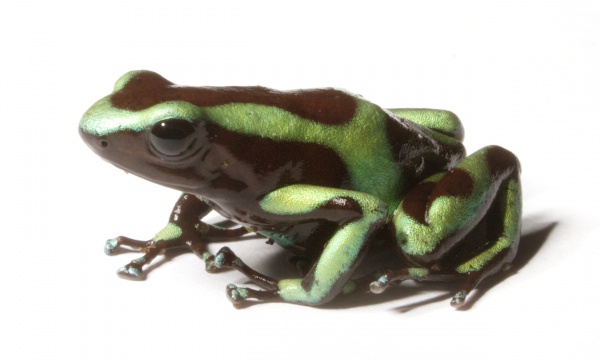Facts About Green and black poison dart frog
The green-and-black poison dart frog, also known as the green-and-black poison arrow frog, is a stunning amphibian native to Central and South America. Remarkably, these frogs have also been introduced to Hawaii by humans. They exhibit a variety of colors, ranging from mint-green to cobalt blue and pale yellow, all accented with dark spots. Despite their toxicity, this species is not currently endangered.
Male green-and-black poison dart frogs are typically about 0.75 inches long, with females being slightly larger. They flourish in the humid lowlands from southeastern Nicaragua to northwestern Colombia. Their poison is potent enough to stop a human heart but is only released when they feel threatened. Fascinatingly, when kept as pets, they lose their toxicity due to changes in their diet.
These frogs are semi-arboreal, spending time both on the ground and in trees, aided by small discs on their toes that facilitate climbing. During mating season, males establish territories and call out to attract females. Once a pair mates, the female lays eggs that the male then fertilizes. After the eggs hatch, the parents transport the tadpoles to small pools of water within bromeliads, where they protect and nourish them until they mature.
Green-and-black poison dart frogs are popular as exotic pets, admired for their vibrant colors, compact size, and intriguing behaviors. However, due to their permeable skin, handling them is not recommended.

 Costa Rica
Costa Rica